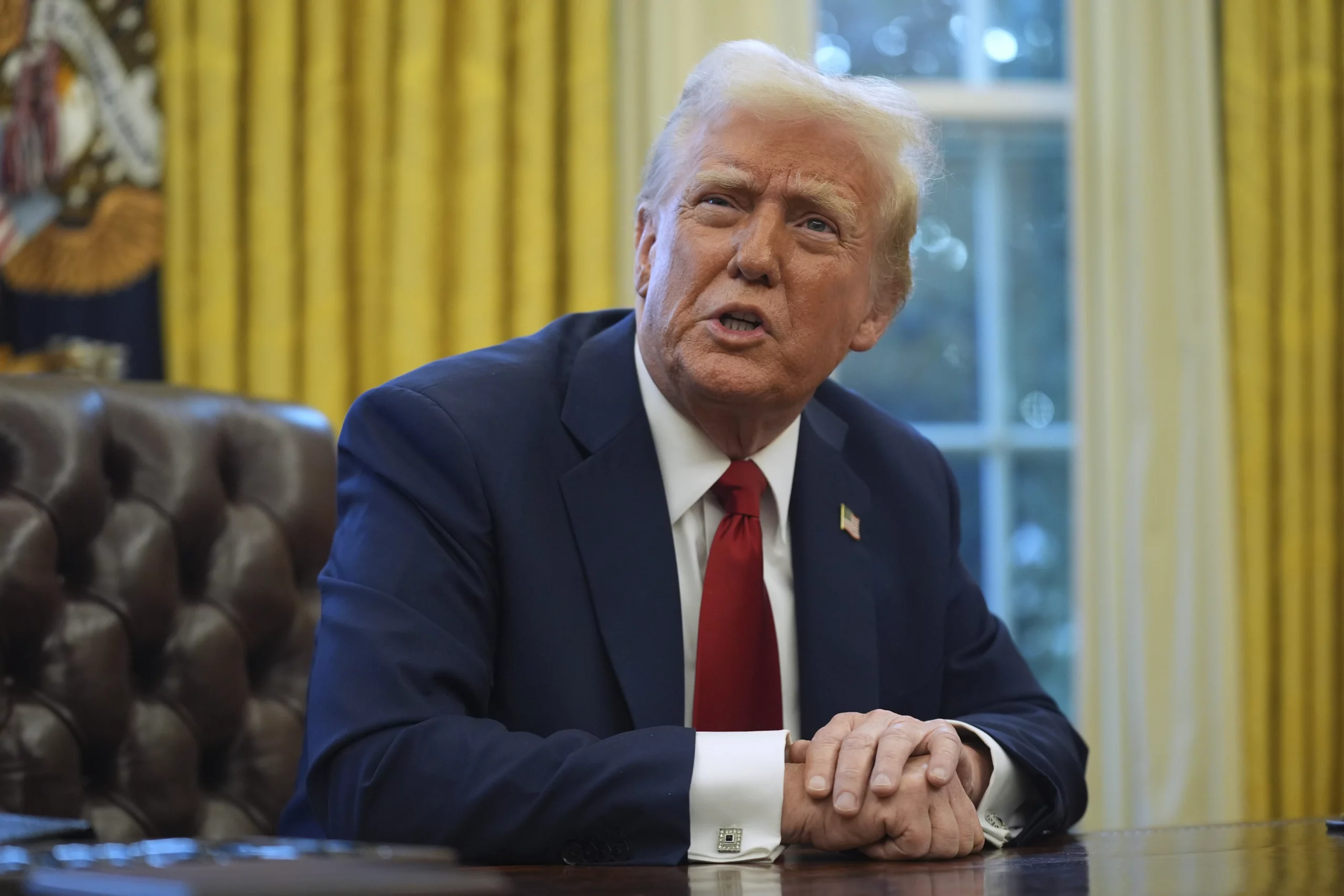

President Donald Trump signed three executive orders implementing wide-ranging tariffs on Canada, Mexico, and China on Saturday, marking the beginning of a potential trade war with the nation’s top commercial partners.
Canadian and Mexican goods exported to the United States will face a 25% tariff, while Canadian energy resources will face a 10% tariff, and China will face a 10% tariff, according to White House officials.
On Truth Social, Trump pointed to fulfilling promises he made on the campaign trail.
“We need to protect Americans, and it is my duty as President to ensure the safety of all,” he said. “I made a promise on my Campaign to stop the flood of illegal aliens and drugs from pouring across our Borders, and Americans overwhelmingly voted in favor of it.”
As a presidential candidate, Trump repeatedly pointed to tariffs as a tool he planned on using to bring in extra funding despite warnings from economists that they may increase inflation.
The new tariffs are in addition to other tariffs, there are no exclusions, and will go into effect at 12:01 a.m. Eastern time on Tuesday.
The two North American allies are critical suppliers of agricultural goods to the U.S. The tariffs could increase grocery prices for Americans, a stark contrast from Trump’s campaign promise to bring down high costs.
The nonpartisan think tank Tax Foundation estimated that the tariffs will raise taxes by more than $1 trillion between 2025 and 2034, leading to an average tax increase of more than $830 per U.S. household in 2025.
In a statement, the American International Automobile Dealers Association implored the U.S., Mexico, and Canada to come to a solution over their trade agreement.
“AIADA’s more than 9,400 members are counting on representatives of all three countries to come to the table and negotiate a solution that makes sense for our economies and our people,” the statement said. “At risk are the jobs of the more than 560,000 Americans employed by international brand dealers in the United States, their $48 billion payroll, and the $71 billion they sell annually in parts and services.”
The president blamed the influx of illegal drugs, particularly fentanyl, and migrants entering the nation illegally across the northern and southern borders as reasons for the tariffs.
A White House fact sheet claims this “constitutes a national emergency under the International Emergency Economic Powers Act (IEEPA).”
According to the U.S. Drug Enforcement Administration, more than 107,000 people died from drug overdoses in 2023, with nearly 70% of those deaths from opioids such as fentanyl.
The tariffs against Canada and Mexico are especially stinging due to the United States-Mexico-Canada Agreement, a trade pact that was a signature agreement under Trump’s first administration.
Officials said several issues will need to be addressed before the tariffs are lifted from the three nations.
“The bottom line is, the best metric will be Americans stop dying from Made in China, distributed by Mexico and Canada, fentanyl,” a White House official said. “And we’ll track those metrics very carefully. We’ll be able to see how much is being recovered at the border.”
Officials also said this represents a border security issue, a key topic that Trump has handled swiftly after being sworn in as president. Through executive order Trump previously declared the southern border a national emergency.
White House press secretary Karoline Leavitt also previewed the tariffs during her second briefing on Friday, where she blamed “the illegal fentanyl that they have sourced and allowed to distribute into our country, which has killed tens of millions of Americans.”
CLICK HERE TO READ MORE FROM THE WASHINGTON EXAMINER
Canada, Mexico, and China are likely to hit back with their own retaliatory tariffs against the U.S. but White House officials deflected the potential consequences.
“Importantly, there is a retaliation clause so that if any country chooses to retaliate in any way, the signal will be to take further action with respect to likely increased tariffs,” a U.S. official said.



